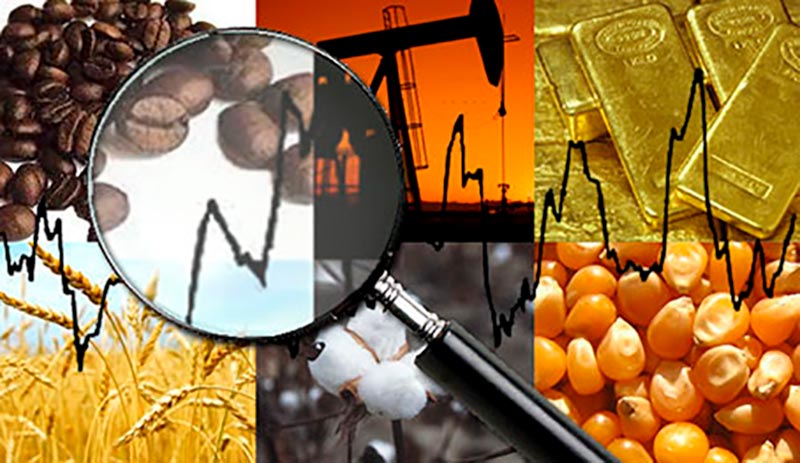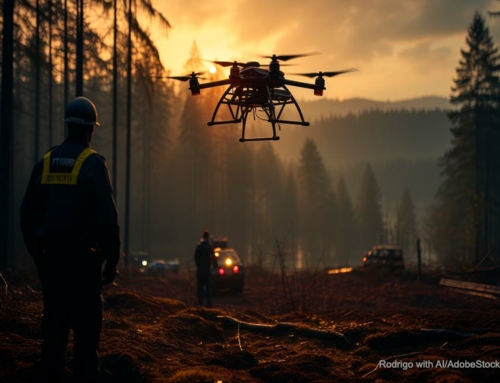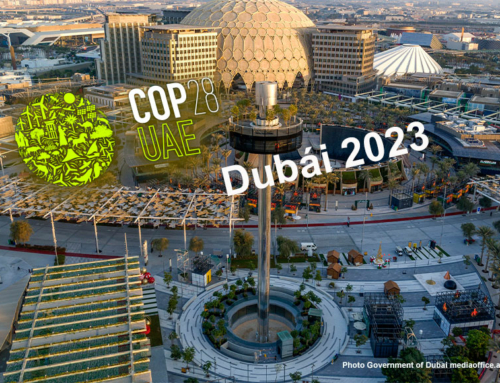We recently heard somebody say that prices of commodities have been rising for the last 10 years and that it would be about time for those prices to decrease considerably. The first thing that can be inferred after listening to this statement is that the person, who made it, without necessarilly being an economist, knows the concept of an economic bubble. It shows that such person knows that prices on food, industrial metals, precious metals, energy and other basic goods have risen in a ongoing notorious fashion that has lasted for a prolonged period of time and deduces, based on all these facts, that these products’s prices should start to decrease significantly in the near future. Without even noticing it, this person has named the three main characteristics that define a bubble. So far so good, we agree with that statement, but according to our thesis of the four bubbles, in which none of the bubbles is independent of the rest of them, we cannot accept that “it’s been inflated and growing for the past 10 years” as a valid argument to explain a hypothetical bursting of the bubble in the future without having taken into account the current condition of the other three bubbles and their relation to the bubble of commodities.
It’s known that among food commodities we could name wheat, corn, rice, soy, oats, coffee, cocoa, sugar, milk, beef and pork. When it comes to industrial metals, we could highlight copper, aluminum, iron, zinc, nickel and lead, while regarding precious metals, gold, silver platinum, palladium and rhodium can be considered as some of the more importants. In the field of energy sources we can find petroleum, from which gasolene, diesel and fuel for heating devices are produced and natural gas. We could also consider wood and materials used in the textile industry such as cotton or wool as commodities. The prices of these commodities change everyday; they are set and negotiated in mercantile exchange institutions, being the Chicago Mercantile Exchange one of the most important in the world.
To illustrate the interrelation under which the four apocalyptic bubbles co-exist, we will use food commodities, due to their undeniable importance and and generalized consumption, and make the following statement:
While inflation of the monetary mass is prolonged, population keeps on growing and havoc in agricultural activities caused by climate change effects worsens, prices on food commodities, even when containing a component of speculation, will not decrease, and if they ever do, it would only be circumstantial and temporary ( due to a superficial economic crisis, a speculative attack or a world economic crisis), but in the mid to long term, and under the assumption that the other 3 bubbles stay constant, prices on food commodities would equal their highest records or reach even higher levels.
Having gotten to this point, a question pops up: are the bubbles of the prices of commodites what we should focus our apocalyptic analysis on or are the bubbles related to basic goods what we should really study? The impact prices have on those who are involved in the production, distribution, selling and buying of raw material, semi-finished products or finished products is a lot more noticeable than that suffered by the planet’s health instead. In the case of food, inflation sustained over time on the prices of cereals can cause, for example, the deterioration of general life quality standards as well as famines and uncountable deahts from starvation, but the mere swelling of the prices’ bubble is not what really impacts and worsens the climate change, however it is the ever-increasing ammount of crops for food commodities, fodder for cattle, basic textile goods and more recently for the production of biofuels to supply human growing population, which numbers augmented exponentially in the 20th century as we saw in the 3rd article of this study, what aggravates the climate change problem. In this case, the swelling bubble of population inflates that of the food commodities, which at the same time is impacting the climate bubble, this happens at the same pace at which more people are added to this planet, increasing the need of land required to supply the world’s population with the goods it needs. All of this occurs at the expense of biotopes around the world, endangering all the species living in them and favouring, slowly but progressively, the global ecological imbalance that in the long run will pose a major and unpredictable threat. The photo added speaks for itself: it is the Amazon rainforest, where trees have been logged to make room for crops meant to be used as fodder. We are very serious when we affirm that this situation could lead to the apocalypse that will extinct life in planet Earth, including of course human life.
The exploitation of wood commodities through indiscriminate logging of forests has varied effects: the destruction of local habitats has a very harmful effect on the zone’s biodiversity; it causes the extinction of local species that see themselves isolated in a habitat that isn’t fit for their subsistence. With the knocking down of millions of trees in the irreplacable Amazon rainforest, the destruction of the world’s most important vegetal lung is taking place rigth before our eyes. The destruction of the Amazon is brewing one of the most dangerous climate related sub-bubbles that bases it’s growing on the depleted surfaces on Earth. The consequences of this sub-bubble’s eventual bursting will be incalculable, as it is impossible to elaborate realistic scenarios based on mathematical models when having such a large number of variables to consider, such as humidity, temperature, soils, food chains interruptions and the interactions of hundreds of thousands species, By not having experienced anything similar to what is currently happening in the Amazon rainforest, we will be unable to know beforehand how catastrophic and devasting will the effects of this bubble’s bursting be. The mafia operating in this area, always indulged by local authorities, pay no mind to agreements and protocols on climate and enviromental protection that have taken years and a lots of struggling to reach. The breaking of these laws with total impunity is accelerating the disappearance of this giant rainforest and making this future disaster’s expiration date a much closer one to what we had planned.
A special mention is well deserved by energy commodities due to their highly contaminant nature, specially those from fossil origins, such as petroleum and hydrocarbons-derived products. Since the appearance of gasolene and diesel-powered engines in the latter years of the 19th century, which spreading was completed trhoughout the 20th century with the irruption of the automobile and other ways of land transportation, machinery used for agricultural activities, commercial and military aviation, a new ecological sub-bubble, to which mankind was completely oblivous just a few decades before then, was created in less than a hundred years. It was carbon monoxide and dioxide emissions what caused this bubble. The Greenhouse effect caused by this gases’s emissions is responsible for what we now know as global warming, which has been proven despite several doubts raised by this subject, is a product of man activities as well as the main reason for the melting of polar ice caps. The bubble of global warming will continue to inflate parallel to the rising of global temperature, unless the corrective measures are executed. It’s bursting, if it ever occurs, can be pictured in many different ways: if glaciers and polar ice caps were to melt, sea level would rise, flooding coastal areas around the world, causing for people that live in these areas to die and emigrate in an unprecendented manner. If global temperature was to suffer an increase of just 2 to 3 °C it would mean the annihilation of species uncapable of tolerating minimum changes on climate conditions. An increase of 8 to 10 °C would make the sustaining of life impossible in most of the planet during this new “summers”.
If to all this we add the little interest shown by most of the world’s population on this subject, the situations turns into an even more alarming one. Nowadays, young and adult people seem to be a lot more interested in topics such as ways of communication, sports, clebrity gossiping, astrology, videogames and pointless chatting in social networks, rather than in subjects of a lot higher relevance as ecology is to this planets habitants, where we are included.
As and ending to this article we will mention that besides the giant steps taken by medicine in barely 150 years, as we have already reviewed, we must not forget the role played by the mechanization of the fields in the demographic explosion that led to the formation of mega-cities in the 20th century, as it made possible to provide thousands of millions of people with food, proving wrong the Malthusian theory that stated that “while population grows in an geometrical progression, means of population subsistence do it arithmetically”. With this sort of premonition, Thomas Malthus wanted to alert humanity about a time in which it may not be able to obtain the required resources to guarantee the survival of the world population due to a serious food shortage. We will speak about this in our fifth and last article of this series that we’ll dedicate to the bubble of climate or ecological bubble, in which will touch subjects as the agricultural revolution as well as the essay on the begining of population, published by Thomas Malthus in 1978. Only after reading and discussing this essay we’ll be able to know what were the mistakes on the Austrian’s theory and if it’s true that he was wrong about everything he said.
Sandor Alejandro Gerendas-Kiss
Translation Alvaro Arconada







Leave A Comment